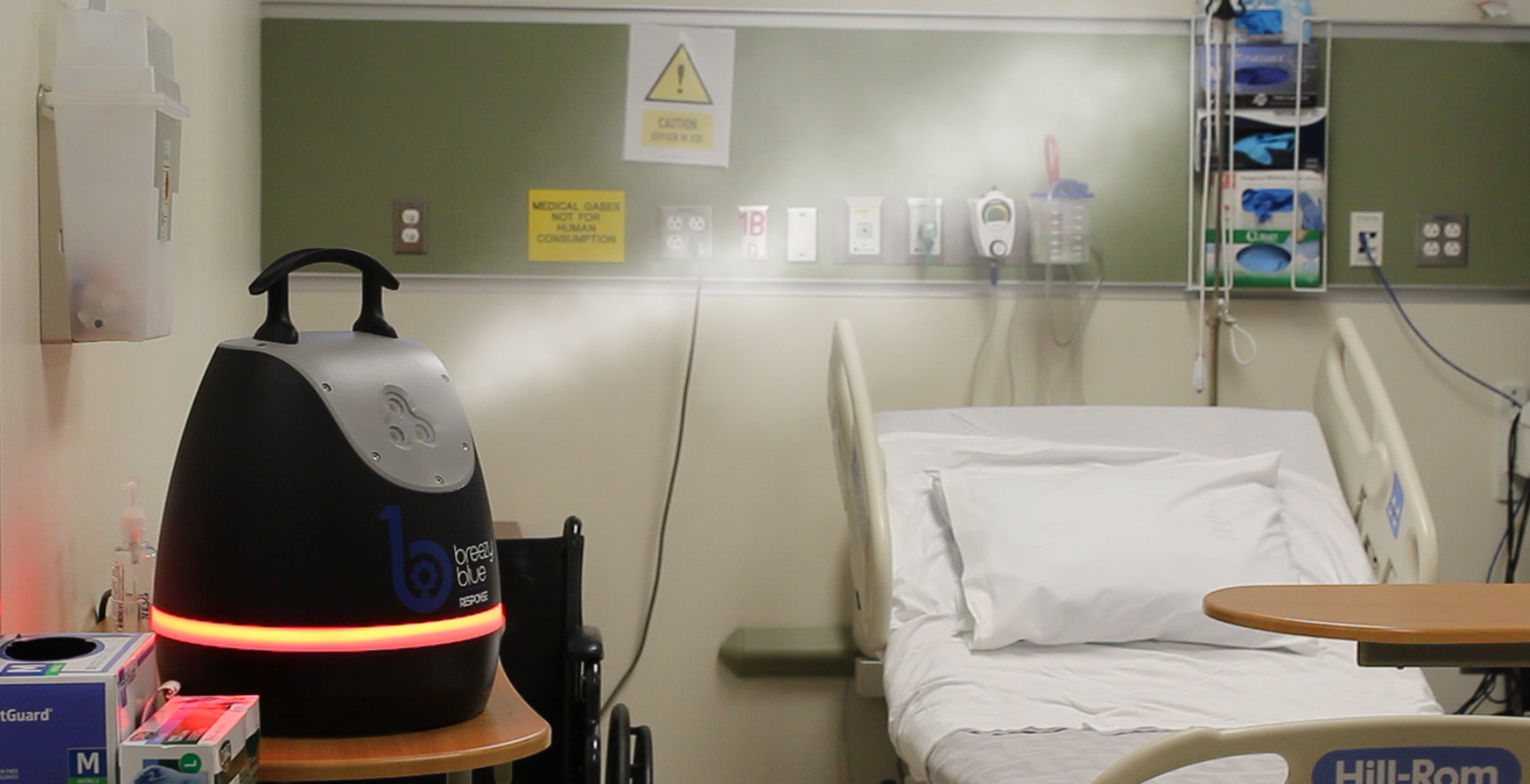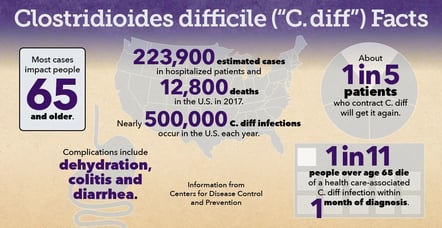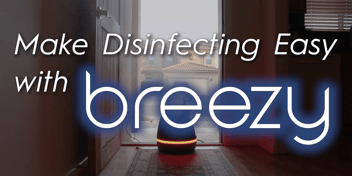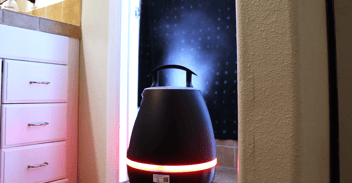
Automating Aerosolized Hydrogen Peroxide for Disinfection
In this new era of heightened health awareness, aerosolized hydrogen peroxide has been a game-changer in battling harmful pathogens. Certain pathogens are notoriously hard to kill, but fogging a hydrogen peroxide-based disinfectant is one way to ensure these tough germs are eliminated from every surface in a room. Let’s dive into how aHP works and how automation can make the disinfection process even more efficient.
What is Aerosolized Hydrogen Peroxide?
Aerosolized hydrogen peroxide (aHP) is a highly effective disinfecting method used to eliminate a wide range of pathogens from surfaces and the air. This technique involves the generation of a fine mist of hydrogen peroxide particles that settle on surfaces as aerosolized droplets. Some of the aHP is changed to vapor and remains in the air until it breaks down or is diluted with outside air. The hydrogen peroxide molecules, in aerosol form, have strong oxidizing properties, which enable them to break down membrane lipids, DNA, and other essential cell components of bacteria, viruses, and other microorganisms, rendering them inactive.
aHP has a diverse range of applications, such as schools, office spaces, healthcare facilities, and more. This method is particularly valuable in environments where thorough and rapid disinfection is crucial, such as patient rooms, laboratories, and ambulances. Typically, a room will get disinfected with aHP after it has been physically cleaned, so the fog settles on exposed surfaces and eliminates any remaining pathogens. Moreover, aHP is safe for humans when protocols are followed correctly, making it a versatile and efficient choice for combating the spread of infectious agents.
Aerosolized Hydrogen Peroxide against C. Difficile
Clostridioides difficile (C. diff) causes a disruption of normal healthy bacteria in the colon. It is the most common cause of healthcare-associated infections (HAI), hospitalizing 223,900 people and killing 12,800 in 2017 in the US alone. C. diff is highly contagious, contaminating surfaces in patient rooms such as handrails, bedside tables, doorknobs, and more. It is resistant to some disinfectants, such as bleach, so C. diff spores often remain on these surfaces even after a room is cleaned. Because of this, extra disinfection procedures are recommended.
One disinfection method that is proven to be effective at eliminating C. diff is aerosolized hydrogen peroxide (aHP). In 2021, the American Journal of Infection Control (AJIC) published a study that found that adding aHP to regular cleaning procedures significantly reduced C. diff infection rates in hospital settings. Prior to the implementation of aHP throughout a 475-bed hospital (July 2009 - September 2011), the facility recorded 120 healthcare-associated C. diff infections. After the implementation of aHP (April 2012 - December 2014), only 72 cases were recorded. This is a 41% decrease in C. diff infections, from 4.6 infections per 10,000 patient days to 2.7 per 10,000 patient days. The reduction increased over the next few years, and researchers found a 74% decrease in C. diff infections between January 2015 and December 2019 as a result of implementing aHP throughout the hospital.
Benefits of Aerosolized Hydrogen Peroxide Machines
Using aHP machines, or H₂O₂ foggers, is a quick and effective way to disinfect rooms such as patient rooms, but they can also be used in office spaces, classrooms, vehicles, and other public spaces where germs tend to spread. When dispersed as a fog, disinfectants can reach all surfaces and even remove germs from the air, including C. diff, coronavirus, and many other pathogens. The small particles penetrate fabrics and settle on often-missed areas, such as underneath tables and chairs, doorknobs, and small spots between items.
Automated aHP machines, like Breezy Blue foggers, offer even more benefits. No workers have to be exposed to the fog; they can press the button and leave the room or use the controller to start fogging from outside the room. Additionally, with schedule mode, Breezy Blue can automatically fog at a certain time every day, meaning it takes no extra labor to disinfect. This automated fogger also collects data to create a log of disinfection events, so facilities are able to track whether spaces are being disinfected or not. aHP is an effective way to eliminate pathogens, and when automated, it takes little to no labor, removes the risk of human error, and ensures that disinfection is completed efficiently and consistently.
Aerosolized hydrogen peroxide removes over 99.9% of pathogens, and with automated tools, your safety is assured.
More Info:
New Study Finds Aerosolized Hydrogen Peroxide Can Significantly Reduce C. difficile Infections in Hospital Settings [APIC]
Aerosolized Hydrogen Peroxide Can Significantly Reduce C. difficile Infections [Medscape]




